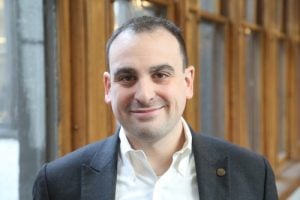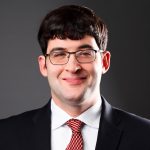(Image via Getty)
Earlier this week, Vault released its closely watched rankings of the nation’s 100 most prestigious law firms. It was there that we learned Cravath held onto its title as the most prestigious firm in America for the fifth year in a row, and that Skadden had edged out Wachtell from the No. 2 spot for the first time in the history of the rankings — by just 0.010 points.
But what if your firm wasn’t top-ranked in the Vault 100? Perhaps your firm isn’t the most prestigious, but that doesn’t mean it doesn’t have clout. Some law firms reign supreme when it comes to certain practice areas, and others are known to dominate entire regions of the country.
Which law firms are considered to be at the top of their game by practice area and region? Let’s find out!
For the purposes of the practice area ranking, Vault asked associates to vote for up to three firms they think of as the strongest in their own practice area, and the overall ranking indicates the firms that received the highest percentage of votes. Associates were not allowed to vote for their own firm, which we’re sure made many recovering gunners very, very sad. Current gunners may find this list useful if they know which area they’d prefer to practice in. Pay attention, prospective laterals, because this is useful for you, too.
We’ve picked out a dozen of the practice areas that were ranked by Vault (you can see the full list here):
Appellate Litigation: Gibson Dunn
Bankruptcy: Weil Gotshal
Energy, Oil and Gas: Vinson & Elkins
General Commercial Litigation: Quinn Emanuel
General Corporate Practice: Cravath
Intellectual Property: Fish & Richardson
International: White & Case
Labor and Employment: Littler Mendelson
Private Equity: Kirkland & Ellis
Real Estate: Fried Frank
Securities: Davis Polk
Tax: Skadden
Next up, we’ve got a ranking that matters to those who think “location, location, location” is the most important thing in life. Vault’s regional rankings are based on votes tabulated from associates who were asked to rate firms on a 1 to 10 scale based on their prestige within the region.
Here’s the list of prestige by region from Vault (you can see the full list here):
Atlanta: King & Spalding
Boston: Ropes & Gray
Chicago: Kirkland & Ellis
Florida: Holland & Knight
Mid-Atlantic: Skadden, Arps, Slate, Meagher & Flom
Midwest: Jones Day
Mountain States: Gibson Dunn & Crutcher
New York: Wachtell, Lipton, Rosen & Katz
New York – Midsize: Pryor Cashman
Northern California: Morrison & Foerster
Pacific Northwest: Perkins Coie
South Atlantic: King & Spalding
Southern California: Latham & Watkins
Texas: Vinson & Elkins
Texas – Midsize: Susman Godfrey
Washington, DC: Covington & Burling
Congratulations to the firms that moved up in this year’s practice area and regional rankings, and congratulations to all the firms that made the cut in the first place. It must be nice to see which firms associates consider as their peers in prestige, and it must be even nicer for partners to know whose pricing models they need to undercut the next time around.
Best Law Firms by Practice Area (2021) [Vault]
Best Law Firms by Region (2021) [Vault]
 Staci Zaretsky is a senior editor at Above the Law, where she’s worked since 2011. She’d love to hear from you, so please feel free to email her with any tips, questions, comments, or critiques. You can follow her on Twitter or connect with her on LinkedIn.
Staci Zaretsky is a senior editor at Above the Law, where she’s worked since 2011. She’d love to hear from you, so please feel free to email her with any tips, questions, comments, or critiques. You can follow her on Twitter or connect with her on LinkedIn.









 Jill Switzer has been an active member of the State Bar of California for over 40 years. She remembers practicing law in a kinder, gentler time. She’s had a diverse legal career, including stints as a deputy district attorney, a solo practice, and several senior in-house gigs. She now mediates full-time, which gives her the opportunity to see dinosaurs, millennials, and those in-between interact — it’s not always civil. You can reach her by email at
Jill Switzer has been an active member of the State Bar of California for over 40 years. She remembers practicing law in a kinder, gentler time. She’s had a diverse legal career, including stints as a deputy district attorney, a solo practice, and several senior in-house gigs. She now mediates full-time, which gives her the opportunity to see dinosaurs, millennials, and those in-between interact — it’s not always civil. You can reach her by email at 




 Jordan Rothman is a partner of
Jordan Rothman is a partner of